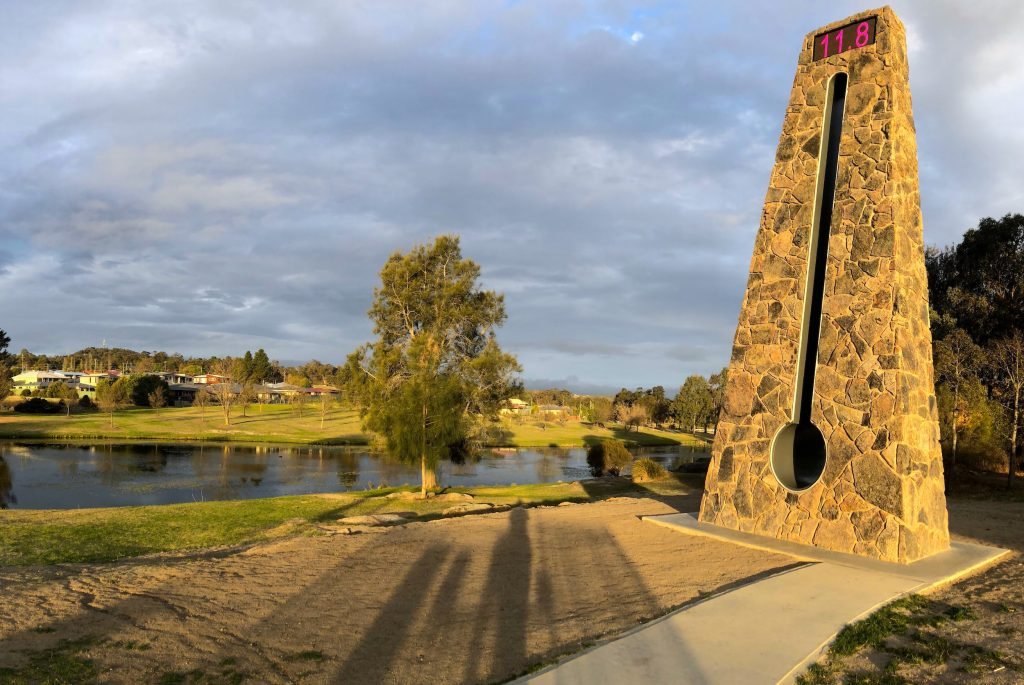Stanthorpe's Brass Monkey Season
Stanthorpe is the coolest town in Queensland. Minus degrees and frosty mornings are a regular occurrence through the winter months and every few years there’s even a day or two of snow!
The Brass Monkey statue in Stanthorpe’s CBD is a famous little fellow that marks the town’s claim to get ‘cold enough to freeze the balls off a brass monkey’. Stanthorpe district celebrates four seasons, the most popular being Brass Monkey Season during the winter months. Not as crude as it may sound, the origin of the ‘cold enough to freeze the balls of the brass monkey’ saying originates by popular account from an occurrence on sailing ships, where the brass monkey was the name given to a metal rack used to store cannon balls.
Photo Credit: Leeroy Todd Photography for Stanthorpe Apple and Grape Harvest Festival
Did you know Stanthorpe has a second ‘Big Thing’ – not just the Big Apple?! The Big Thermometer is a beautiful stone monument, overlooking the picturesque Quart Pot Creek.
If the frosty grass and misty cloud above the creek isn’t proof enough, the cool temperature reading on the numbers atop the thermometer will prove you’re in Queensland’s coolest town!
Find The Big Thermometre next to the Stanthorpe Visitor Information Centre.
Girraween National Park is spectacular any time of the year! Just click on the link to view the Girraween Discovery Guide for Walks
Girraween and Sundown national parks Discovery Guide (des.qld.gov.au)
Frosty Mornings at Sancerre Estate
We have already had some spectacular frosty morning here in Ballandean. We often get asked if the frost is harmful to the vines. Actually, winter dormancy is critical for grapevines to prepare for renewed growth in the spring. Lower temperatures and shorter days of sunlight trigger dormancy. These changing conditions signal the vine to stop actively growing.
Once grapes are harvested, vines begin building reserves of carbohydrates, storing them in the woody parts of the plant: roots, trunk, and cordons. When reserves reach the right level, the vine’s leaves change color and eventually fall off. The carbohydrate reserves help the plant overwinter and provide food for growth in the spring.



